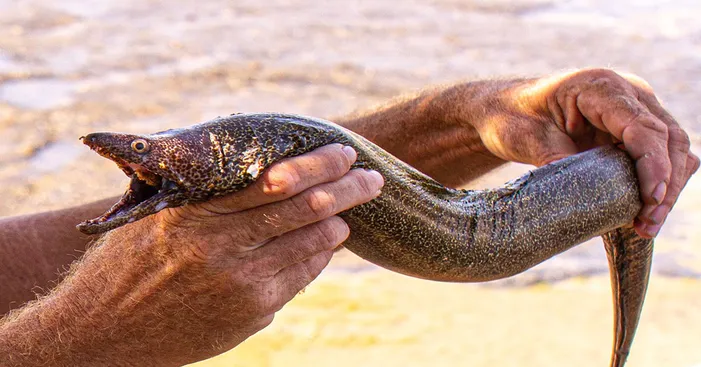Table of Contents
Eels may look slimy and creepy, but they are actually delicious and nutritious fish.
Their meat is high in protein, omega-3 fatty acids, and vitamins A, D, and E.
It also contains several other beneficial nutrients, such as selenium, phosphorus, and magnesium.
Eel meat has been shown to have many health benefits, including boosting heart health, strengthening bones and joints, protecting against cancer, improving skin health, and boosting energy levels.
It is also a good source of iron and taurine, two nutrients that are important for overall health.
This thorough article offers all the information you need to know about eel meat.
Eel’s overview:
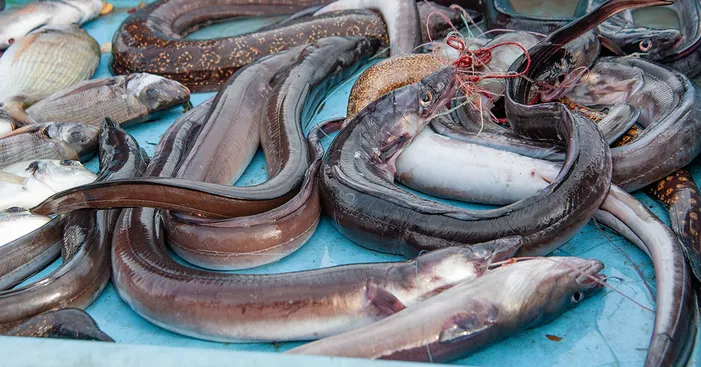
Eels are some of the oldest fish in the world, with fossils dating back 100 million years.
They are found in freshwater rivers and streams in Europe and North America, but their breeding ground is the Sargasso Sea, off the coast of Bermuda.
The eel’s life cycle is unique.
Eels are born in the Sargasso Sea as tiny larvae called leptocephali.
These larvae drift with the currents for several years before reaching the coasts of Europe and North America.
Once they reach the coast, they transform into glass eels, which are transparent and about 10 centimeters long.
Glass eels then swim upriver, where they spend the rest of their lives. Eels can live for up to 50 years, and they reach sexual maturity after about 10 years.
Once they are mature, they swim back to the Sargasso Sea to spawn.
The adults die after spawning, and their eggs hatch into new leptocephali, which begin the cycle again.
The eel’s migration is a remarkable feat.
Eels can travel thousands of miles, and they use a combination of tides, currents, and their sense of smell to navigate.
The exact reason why eels make this journey is unknown, but it is thought to be related to reproduction.
Eels are an important part of the freshwater ecosystem.
They are preyed upon by many animals, including fish, birds, and mammals.
Eels also help to control populations of other fish and invertebrates.
Eel meat nutritional values and health benefits:
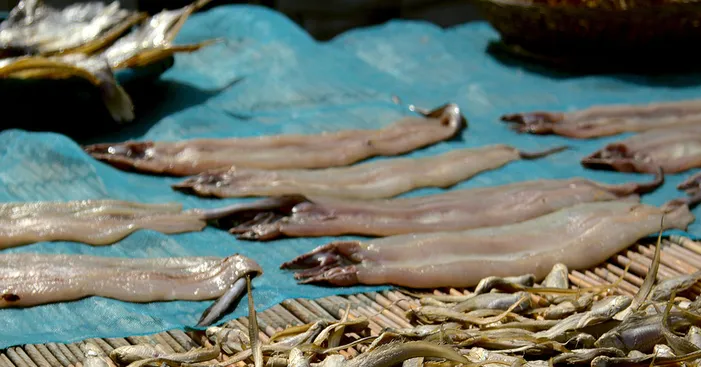
Nutritional values:
It may seem surprising, but eel is an excellent health food, rich in vitamins and highly nutritious.
In addition to the high-quality protein unique to fish meat, it also contains many vitamins that are generally deficient in fish meat.
Eel is rich in vitamin A, vitamins B1 and B2, vitamin D, and vitamin E and minerals are also rich in zinc and calcium.
In addition, it is also rich in DHA and EPA, and the viscous part of the eel’s body surface contains mucin, an ingredient that protects the gastrointestinal mucosa.
Vitamin A is said to be 1500 μg, about 4 times that of cheese and about 6 times that of eggs, and 1.0 mg of vitamin B75, about 10 times that of spinach.
Health benefits:

Eel: A Good Source of Calcium
Eels are a good source of calcium, a mineral that is essential for building strong bones and teeth.
Calcium is also important for blood clotting and muscle function.
One 150-gram serving of grilled eel contains 100 milligrams of calcium, which is more than the amount of calcium in 110 milliliters of milk.
This makes eel a good choice for people who are looking to increase their calcium intake.
In addition to calcium, eels are also a good source of protein, omega-3 fatty acids, and vitamin A.
These nutrients are all beneficial for health.
So if you’re looking for a delicious and nutritious way to get your calcium, eel is a good option.
Offers vitamin A:
Retinol is a form of vitamin A that is essential for healthy eyes and skin.
It helps to keep the mucous membranes of the eyes and skin healthy, and it also helps to boost the immune system.
Good sources of retinol include liver, fish, eggs, and dairy products.
You can also get retinol from plant-based sources, such as carrots, sweet potatoes, and spinach.
DHA and EPA: The Healthy Fats in Eels
Eels are a good source of DHA and EPA, two types of unsaturated fatty acids that are essential for good health.
DHA is important for brain development and vision, while EPA helps to prevent heart disease and inflammation.
Unlike saturated fatty acids, which are found in meat fat, DHA and EPA are healthy lipids that are found in fish oils.
Saturated fatty acids are necessary for our bodies, but too much of them can raise blood cholesterol and increase the risk of heart disease.
The recommended daily intake of n-3 unsaturated fatty acids, including DHA and EPA, is 18 grams for men over 18 and 2,100 milligrams for women over 18.
Eels are a good source of these fatty acids, with 2 grams of DHA and EPA per 100 grams of eel.
Since our bodies cannot produce DHA and EPA, it is important to get them from our diet.
Eating eels is a delicious and healthy way to get your daily dose of these essential fatty acids.
For infants:
Eel is not suitable as a first complementary food for babies under one year old.
However, older children can eat steamed eel dishes if they are not allergic to them.
The first time you introduce your child to new seafood, start with a small portion, just enough for them to take a small bite.
If their body reacts well to the seafood, you can gradually increase the portion size.
Steamed or boiled eel is a good source of protein, which is beneficial for growing bodies.
It also has a mild, delicate flavor.
However, due to the risk of mercury in eel meat, it should not be eaten more than twice a week.
For Women:
Eel meat is a good source of vitamins and minerals that are essential for women’s health.
It is also a good source of antioxidants, which can help to protect the body from damage.
Vitamins and Minerals:
Eel meat is a good source of vitamins A, D, and E.
These vitamins are important for maintaining a healthy immune system, skin, and hair. Eel meat is also a good source of iron, which is important for transporting oxygen throughout the body.
Antioxidants:
Eel meat is a good source of antioxidants, such as astaxanthin and glutathione.
These antioxidants can help to protect the body from damage caused by free radicals.
Free radicals are unstable molecules that can damage cells and tissues.
Sexual Health:
Eel meat is also said to be good for sexual health.
It is a good source of omega-3 fatty acids, which have been shown to improve sexual function in both men and women.
Overall, eel meat is a healthy choice for women.
It is a good source of vitamins, minerals, and antioxidants, all of which are important for maintaining good health.
For Men:
Men are often keen fishermen, and they enjoy eating simple but healthy dishes made from their catch.
These dishes are often prepared right on the bank of the river where the fish was caught.
Fresh eel makes a very tasty and nutritious soup, and it can also be cooked over coals.
Eating fresh fish is healthier than eating food that has been sitting in the fridge.
Eel is a good source of nutrients that are important for men’s health.
It is rich in protein, omega-3 fatty acids, and vitamin D.
These nutrients can help to improve sexual function, boost energy levels, and reduce stress.
Eel is also a good source of vitamin B12, which is essential for maintaining a healthy nervous system.
If you are looking for a healthy and delicious way to improve your overall health, consider adding eel to your diet.
You can find eel at most seafood markets, and it can be prepared in a variety of ways.
Other health benefits:
- Protects the heart and blood vessels.
- Reduces the risk of cancer.
- Lowers blood sugar and controls diabetes.
- Stimulates the brain and improves memory.
- Delays cell aging.
- Eliminates toxins and detoxifies the body.
- Boosts the immune system.
- Keeps skin and eyes healthy.
- Fights fatigue and prevents anemia.
- Keeps bones and teeth healthy.
Precautions before you consume eel meat:

Eels are a healthy food, but they can contain pollutants, such as PCBs.
PCBs are a group of man-made chemicals that were once used in a variety of industrial applications.
They are now known to be toxic and have been linked to cancer and other health problems.
PCBs can enter the environment through a variety of sources, including industrial spills, leaks, and fires.
They can also be released into the air and water from landfills and other waste disposal sites.
Eels are particularly susceptible to PCB contamination because they feed on sediments, which can contain high levels of these chemicals.
The amount of PCBs in eels can vary depending on the source of the eels and the environmental conditions in which they were caught.
In general, it is recommended to limit your consumption of eels to two portions per month.
This is especially important for children and pregnant women, who are more vulnerable to the effects of PCBs.
Here are some good tips:
- If you are concerned about the PCB content of eels, you can choose wild-caught fish over farmed fish.
Farmed fish are often fed diets that contain PCBs. - You can also avoid eating fish that are high in fat, such as eels, swordfish, and tuna.
Fat tissue can accumulate PCBs. - Cooking fish thoroughly before eating it will help to break down some of the PCBs.
- Washing your hands thoroughly after handling fish will also help to reduce your exposure to PCBs.
By following these tips, you can help to reduce your exposure to PCBs and protect your health.
Using eel meat:
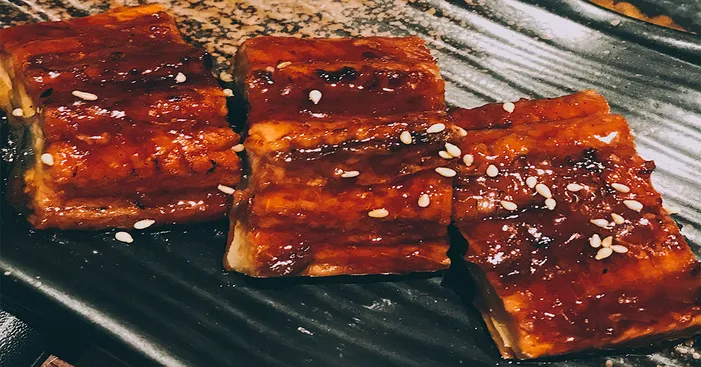
Grilling on the barbecue When cooking eels on the barbecue, in the oven, or à la plancha, it is best to leave the skin on the fillets for best results.
Eels can be found in a variety of forms, including filleted, marinated, smoked, canned, frozen, and fresh.
In France, eels are typically eaten cooked.
They can be prepared in persillade (a garlic and parsley sauce), Provençal style, as a ragout, stuffed, or in a fricassee.
In Japan, eel is used in many dishes, but the most popular is kabayaki.
This is a dish where eel is threaded onto skewers and basted with a sauce made from eel broth, mirin, soy sauce, and sugar.
The eel is then grilled over a wood fire.
Eel is also served as sushi and sashimi in Japan.
Eels can be cooked in a variety of ways, including:
- Baking.
- Poaching or boiling in salted water.
- Steaming.
- Pan-frying or sautéing.
- Cooking à la plancha.
Eel meat with parsley sauce:
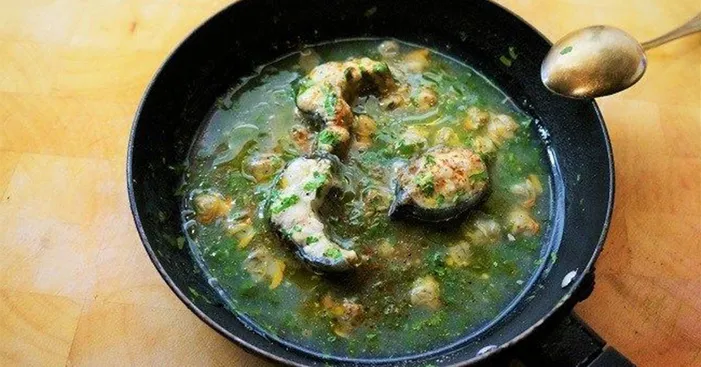
Ingredients:
- 800g eels, cut into 3 cm pieces.
- 50g butter.
- 4 tbsp chopped flat-leaf parsley
- 1 tbsp chopped garlic.
- 1 drizzle olive oil.
- Pinch of pepper.
- Salt or fine salt.
Preparation:
- Heat the oil in a frying pan over medium heat.
- Add the eel and cook for 5-7 minutes, or until browned on all sides.
- Season with salt and Espelette pepper.
- Reduce the heat to low and cook for an additional 5 minutes, or until the eels are cooked through.
- Remove from the heat and stir in the butter, parsley, and garlic.
- Serve immediately.
Eel meat fricassee:

Ingredients:
- 1 kg small eels
- 30 g butter
- 4 tablespoons oil
- 3 tablespoons flour
- 2 shallots, chopped
- 3 garlic cloves, minced
- 1 bunch parsley, chopped
- Salt and pepper to taste
Preparation:
- Clean, gut, and head the eels.
- Peel and chop the shallots and garlic.
- Wash and chop the parsley.
- Cut the eels into sections.
- Dredge the eels in flour, shaking off any excess.
- Heat the oil in a frying pan over medium heat.
- Add the eels and cook until browned on all sides, about 5 minutes per side.
- Reduce the heat to low and cook for an additional 20 minutes, or until the eels are cooked through.
- Remove the eels from the pan and drain on paper towels.
- Discard the cooking oil.
- Melt the butter in the same pan over medium heat.
- Add the shallots and cook until softened about 2 minutes.
- Return the eel to the pan and cook for 1 minute more.
- Add the garlic and parsley and stir to combine.
- Season with salt and pepper to taste.
- Serve immediately.
Buying eel meat:
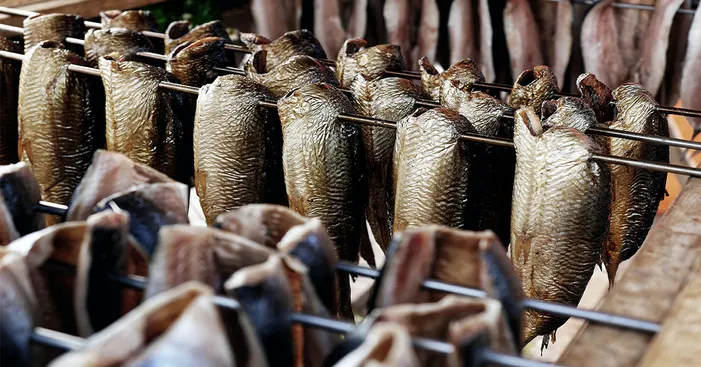
The first thing to know is that eels must be bought alive if they are not to be smoked:
This is because its flesh spoils and its blood can release toxic substances if it is killed in advance.
Eels can be bought and eaten at two stages of their life:
acquired as a glass eel (baby fish 5 to 10 cm long), it can be fried.
As an adult (60 cm fish), it should be skinned and cut up just before being prepared.
The fishmonger can take care of this.
In all cases, live eels should be almost black, shiny, and viscous at the time of purchase.
Don’t feel like cooking? You can buy your eel already smoked. It’s also a very tasty dish. You can enjoy it on toast or in a salad.

